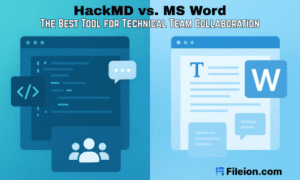Behind every successful app or platform is a sharp, well-structured team. The roles in software development shape how ideas become real products. In 2025, these roles are more defined and more diverse than ever. They cover everything from product strategy and design to engineering, QA, and DevOps.
Our blogpost will help you understand each role on a modern development team. You’ll learn who’s responsible for what and how they work together to build great software.
Key Takeaways
|
7 Key Roles in a Software Development Team Today
A strong software product starts with the software development team roles and responsibilities. In 2025, roles in software development play a clear part in turning ideas into working solutions.
Here’s a closer look at the 7 key roles in software development:
1. Product Owner
The Product Owner basically speaks for the customer. They’re the ones shaping the product’s direction, laying out the roadmap, and deciding what features come first. Their job involves more than just the implementation team roles. They’re the bridge between business folks and the development crew, turning broad goals into concrete steps the team can actually build on.
In 2025, the software development staff will also rely on analytics tools and customer feedback platforms. This helps them adjust priorities quickly based on user data and market trends.
Key responsibilities:
- Define product vision and roadmap
- Prioritize the feature backlog
- Communicate with both stakeholders and developers
- Make decisions based on customer feedback and data
- Ensure the team builds the right thing at the right time
2. Business Analyst
Business Analysts are the translators in the room, they take what the business needs and shape it into something the tech team can build. They stay in close contact with both business leaders and developers to make sure everyone’s on the same page. Their job is to make sure user stories aren’t just clear but also testable and in sync with where the product’s headed.
On agile teams, they also lay out acceptance criteria and help plan sprints. And as systems get more complex, agile software development roles are keeping business goals and technical work aligned.
Key responsibilities:
- Gather and document business requirements
- Create user stories with clear acceptance criteria
- Bridge communication between business and tech teams
- Assist in sprint planning and backlog refinement
- Ensure technical solutions meet business goals
3. Software Developer
Developers are the real ones who are constructing the product, piece by piece at a time. Developer tasks focus on the frontend and some on the backend, while some try to do both as a full stack development team..
These days, particularly in 2025, the title for software developer is working alongside AI tools that assist in writing code, finding bugs or even proposing ideas for system architecture. Their software development life cycle roles are still on the controls, but the tools have certainly become smarter.
Key responsibilities:
- Write and maintain code
- Build user interfaces or backend systems
- Work with AI-assisted development tools
- Review code and collaborate with other developers
- Fix bugs and optimize performance
4. Quality Assurance (QA) Engineer
Quality Assurance (QA) Engineer QA Engineers ensure the software is working before it reaches the users’ eyes. They hunt for bugs, ask if features make sense and test how user-friendly it is.
Nowadays, QA teams frequently employ automated testing tools to speed up the process. Their roles in software development also collaborate with CI/CD pipelines to run through each deployment in separate environments. Testing is no longer an end-of-life consideration. They work with developers and software development organizations now at all stages to make sure quality remains high from beginning to end.
Key responsibilities:
- Test software for bugs and usability issues
- Create and run automated test scripts
- Collaborate with developers in early stages
- Conduct testing is part of every deployment
- Monitor quality across all environments
5. UX/UI Designer
UX/UI Designers play a key role in making software user-friendly and enjoyable. They take concepts and transform them into clean, intuitive interfaces that people can easily navigate. Using tools like Figma and Adobe XD, they design and test rapidly. By 2025, there’s a stronger emphasis on creating designs that are both accessible and tailored to individual users. This means building for all users and adjusting designs to fit different needs and devices.
Designers now work closely with developers using shared tools to keep the look and feel the same everywhere. Their roles in software development also use simple user data like how fast someone finishes a task to improve the product.
Key responsibilities:
- Design user-friendly interfaces
- Use tools like Figma and Adobe XD for prototyping
- Focus on accessibility and personalization
- Test and improve designs based on user behavior
- Maintain design consistency with developers
6. Devops Engineer
DevOps Engineers help development teams deliver software quickly and reliably. They create and maintain systems for testing, building, and deploying code. Using various tools, their roles in software development also manage servers and ensure everything runs without issues. By 2025, DevOps goes beyond scripting, these engineers also develop tools that let other team members test and deploy on their own. This streamlines the process and boosts team productivity.
Key responsibilities:
- Set up and manage CI/CD pipelines
- Automate testing and deployment processes
- Manage infrastructure using code (IaC)
- Build tools for developer self-service
- Monitor system reliability and performance
7. Software Architect
The Software Architect in 2025 plays both a technical and strategic role. They define the overall system architecture: whether to use microservices, monoliths, or hybrid patterns depending on scale, team maturity, and product goals.
Architects are responsible for choosing tech stacks, planning for scalability. And their roles in software development also define data flow and integration boundaries between internal systems and external APIs.
With AI adoption, software development organizational structure now evaluates where to embed AI models, how to manage data pipelines, and how to ensure performance under load.
Architects also set engineering standards that support maintainability, including how teams write modular code, handle observability, and manage cross-functional alignment.
Key responsibilities:
- Define overall system architecture
- Choose tech stacks and design patterns
- Plan for scalability and performance
- Integrate AI models and data flows
- Set engineering standards and code practices
Why These Roles Matter in Software Development
Having the right roles make sure each part of the team works together smoothly to build, test, and launch software faster and better. Here’s why these roles in software development make a real difference:
Better Role Clarity Reduces Failure
When everyone knows what they’re supposed to be doing, teams just work better. Having clear lines between QA, DevOps, and Developers helps keep things moving without unnecessary slowdowns, especially when you’re trying to get that MVP out the door quickly.
For small teams or startups, especially those navigating limited resources, this clarity becomes even more vital. Instead of hiring large full-time departments, many opt for IT outsourcing for small businesses to stay lean and nimble. Outsourcing roles like QA or DevOps can offer expert-level support without the overhead. It’s perfect for growing products that need flexibility without sacrificing speed.
These days, talent alone isn’t enough, teams need clarity. When responsibilities are spelled out, you avoid overlap, catch problems earlier, and make decisions faster, even when things get hectic. Team members need to know when to act, when to raise concerns, and how to cooperate without getting in each other’s way.
Defining what are the 5 roles in a team project roles also sharpen the build–measure–learn cycle critical for MVP development.
- Product owners define priorities.
- UX/UI designers sketch flows.
- Developers ship usable features.
- QA catches issues fast, and
- DevOps ensures smooth deployment.
This feedback loop from idea to prototype to real user testing. So, it gets faster when everyone focuses on their core strengths. You iterate more often, deploy with confidence, and get better market signals early.
Balancing Specialization and Versatility
2025 teams are built on a balance of depth and flexibility.
- Specialists: like security engineers or data architects, handle the hard stuff.
- Versatile generalists fill gaps, adapt quickly, and keep momentum strong.
This cross-functional model works best when roles in software development are empowered to make local decisions without waiting on siloed departments. It’s how modern orgs pivot quickly, reduce bottlenecks, and handle evolving product demands.
Collaboration Across Roles Drives Success
Some of the most successful software development projects examples are born from tight collaboration across Dev, Design, QA, and Product.
- Designers understand backend constraints.
- Developers get involved in UX conversations.
- QA helps refine user flows, not just test them.
This culture of mutual respect and real-time feedback improves everything, from code quality to user satisfaction. Great software isn’t built in isolation. It’s a team sport, and every role counts.
Best Practices To Build Your Software Development Team
Building a strong software team takes more than just hiring smart people. You need the right structure, timing, and strategy to match your product goals. Here are some best practices to guide you.
Match Roles to Each Stage of Your Product
Scale the team with the product. At this point, start hiring QA, DevOps, backend specialists, to be able to handle more traffic, gain stability, and fix the cracks before they spread.
When moving to scale-up or enterprise, you need real heavy hitters. Architects of the structure, enforcers of the data, and analytics engineers to be the coolest kid in the room.
Staged hiring will control expenses and avoid hoarding talent that you are not currently using as you develop the notion of what you are assembling.
Blend In-House and Outsourced Team Members
Not all is to be constructed. Retain the main team internally. Particularly if they’re essentially designing the product and leading all the major technical choices.
For testing, DevOps setup, as well as for mobile development, consider using offshore teams. Faster, cheaper and your core team gets a break. Striking the correct between in-house and outside talent enables you to keep it lean, move fast and not get scorched when timelines tighten. Just find the mission and power everyone to the same standard, wherever they are.
If you’re scaling or need extra muscle for specific tasks, consider partnering with experts who specialize in outsourced dedicated software development teams. It’s a flexible way to access top-tier skills without the long-term commitment, giving your internal team the freedom to focus on what they do best.
Use Cross-Functional Squads for Speed and Flexibility
Modern roles in software development thrive in squad-based structures. There are small, cross-functional groups with all the roles needed to ship features independently. Each squad might include:
- 1 backend dev
- 1 frontend dev
- 1 QA engineer
- 1 designer
- 1 product owner
These squads own a feature from end to end, which minimizes blockers, reduces handoffs, and makes collaboration easier. It’s how companies like Spotify, Atlassian, and Airbnb move fast without breaking things.
Bottom Line
Getting the right roles in software development, knowing what people are responsible for, and hiring the people who get along is 3/4 the battle. What worked for your early MVP won’t work when you’re scaling or replacing the old tech.
Hire where your product is. Keep up with the latest fads of DevSecOps or microservices not because it is what everyone does, but because it means you can move faster and build cleverer.
Contact Golden Owl Solutions – a 10-year experienced IT outsourcing company!
Email: hello@goldenowl.asia


































